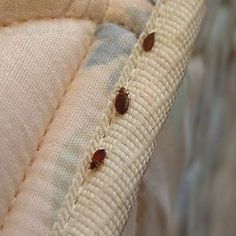Dependable A1 Bed Bug Treatment Houston - Proven Approaches
Dependable A1 Bed Bug Treatment Houston - Proven Approaches
Blog Article
Understanding the Lifecycle of Bugs for Targeted Control Techniques
Understanding the lifecycle of insects is a fundamental aspect of effective pest monitoring approaches. Through a much deeper understanding of just how pests evolve and flourish, tailored control strategies can be created to deal with specific factors in their lifecycle, ultimately leading to more successful parasite administration end results.
Significance of Recognizing Parasite Lifecycle
Understanding the lifecycle of insects is vital for establishing efficient and targeted control approaches in parasite administration. By comprehending the numerous phases a parasite undergoes from egg to adult, insect control experts can recognize weak spots in the lifecycle where treatment can be most effective. For circumstances, knowing when larvae are most active can assist figure out the optimum timing for applying larvicides. Additionally, recognizing the life-span of a bug species can aid in anticipating populace development patterns and prospective problem risks.
Moreover, identifying the details environmental conditions essential for every stage of the bug's lifecycle can guide choices on environment alteration or exemption techniques to reduce and interfere with the lifecycle pest populaces. This knowledge enables pest management specialists to execute proactive measures rather than relying only on responsive treatments, causing even more long-lasting and sustainable pest control remedies. Ultimately, a detailed understanding of bug lifecycles encourages bug control professionals to customize their approaches efficiently, decreasing environmental impacts and making the most of control results.
Trick Phases in Insect Development
To properly apply targeted control approaches in insect management, a critical aspect lies in thoroughly identifying and understanding the key phases in insect growth. Parasite advancement commonly consists of a number of vital phases that are vital for their lifecycle and monitoring.

Susceptabilities in Parasite Lifecycle
Throughout the numerous phases of an insect's lifecycle, distinctive susceptabilities emerge that can be strategically targeted for effective control steps. One vital susceptability exists in the egg stage, where insects are usually extra at risk to particular insecticides or organic control representatives due to their soft external shell, making them easier targets for intervention. Additionally, the larval or nymph stage provides susceptabilities as pests go Visit Your URL through quick growth and growth, requiring high power usage that can be manipulated by disrupting their food resources or introducing development preventions. Pupal phases, characterized by stability and transformation, offer a home window for targeted control with physical obstacles or certain treatments that hinder effective appearance. Lastly, adult pests, while a lot more resistant because of their reproductive ability, can still be at risk throughout mating or egg-laying tasks, which can be interrupted with scent catches or sanitation methods. Comprehending these susceptabilities in the insect lifecycle is important for developing precise and reliable control techniques that effectively handle parasite populations while reducing environmental influence.
Carrying Out Targeted Control Procedures

Executing targeted control steps normally entails a multi-faceted method. This may consist of habitat adjustment to make the setting much less friendly to bugs, such as getting rid of standing water for insect control or sealing entry factors for rodents. In addition, organic control techniques can be used, where natural killers or pathogens are introduced to keep bug populations in check.
Integrated Bug Monitoring (IPM) approaches original site that integrate numerous control measures in a collaborated and sustainable way are usually the most efficient in accomplishing lasting bug management objectives. By carrying out targeted control measures based on a complete understanding of parasite lifecycles, parasite populaces can be efficiently managed while minimizing threats to human health and the setting.
Enhanced Parasite Administration Practices

In addition, the incorporation of biological control agents, such as all-natural predators or pathogens of parasites, can aid decrease reliance on chemical pesticides Full Article and promote a much more well balanced ecosystem. Implementing physical barriers and traps can also be part of enhanced bug monitoring methods, using safe and targeted services for pest control. Furthermore, the usage of pheromones and other semiochemicals can disrupt pest breeding patterns and communication, resulting in decreased bug populations over time.
Verdict
By identifying vital stages in insect development and vulnerabilities in their lifecycle, targeted control measures can be implemented to lessen pest populaces. Boosted pest management methods can aid reduce the dependence on broad-spectrum chemicals and advertise even more environmentally pleasant and lasting bug control techniques.
Comprehending the lifecycle of parasites is necessary for establishing effective and targeted control approaches in bug administration. By understanding the various phases a parasite goes through from egg to grownup, pest control specialists can recognize at risk factors in the lifecycle where intervention can be most successful. Inevitably, a complete understanding of insect lifecycles equips parasite control professionals to customize their approaches effectively, decreasing ecological impacts and maximizing control results.
By implementing targeted control procedures based on a complete understanding of insect lifecycles, pest populaces can be effectively managed while minimizing threats to human health and wellness and the environment.
By recognizing vital phases in insect development and susceptabilities in their lifecycle, targeted control steps can be implemented to lessen parasite populaces.
Report this page